- Home
- About Us
- Our Service
- Post-Operative Instructions
- Facilities
- Gallery
- Testimonials
- Blog
- Contact Us

- Home
- About Us
- Our Service
- Post-Operative Instructions
- Facilities
- Gallery
- Testimonials
- Blog
- Contact Us
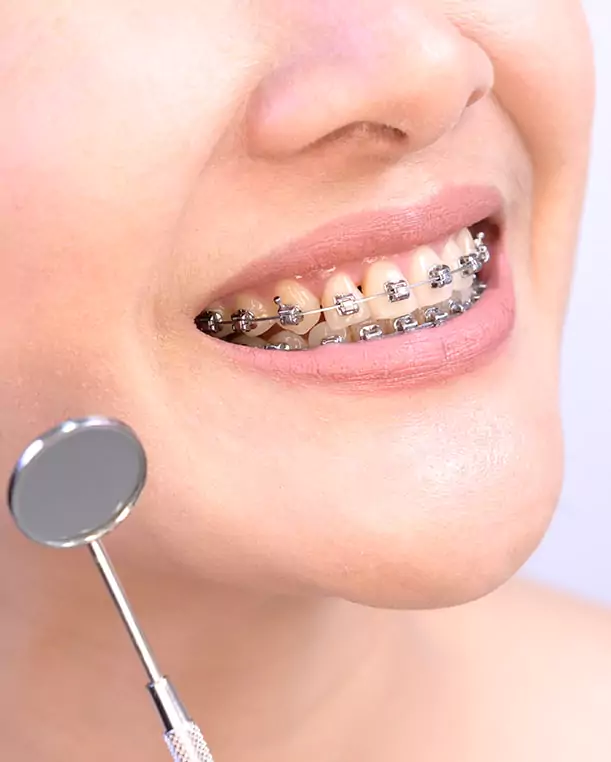
Orthodontic treatment deals with correcting teeth and jaw alignment by putting on corrective devices like braces. Wearing dental braces will exert gentle pressure on teeth and jaw so that the jaw muscles will be restrained, allowing the teeth to move in the right direction for repositioning.
Correcting dental irregularities will improve not just your smile’s appearance but also the functionality of your teeth.
Aside from straightening crooked and crowded teeth, orthodontic treatments help fix the following dental conditions:
Teeth and jaw misalignment impact our dental health in many ways. Correcting misaligned teeth and jaw has various advantages besides acquiring a stunning smile. Here are a few:
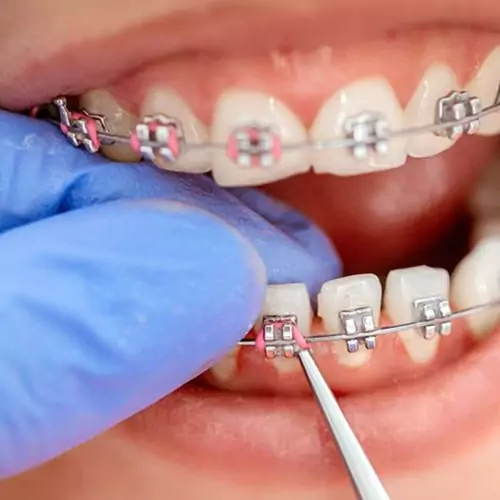
There are different types of orthodontic braces to direct teeth realignment. Orthodontists determine the best brace option for a patient after identifying the degree of crookedness and unique needs.
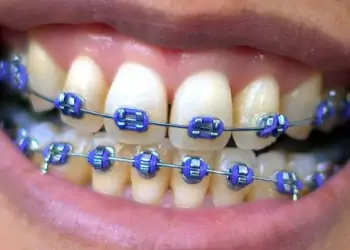
The traditional metal braces are fixed appliances used for decades and involve a combination of archwire brackets made of stainless steel. The metal brackets are bonded over the teeth surfaces, and the archwire applies pressure for repositioning the teeth. Despite it performs incredibly well, the braces are highly noticeable.
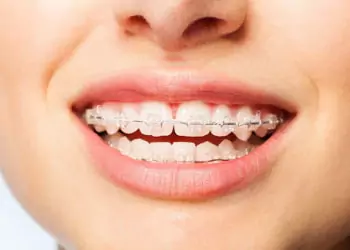
Ceramic braces also have a combination of archwire and brackets but are made of tooth-colored ceramic material. So they are less visible. In short, ceramic braces work similarly to traditional metal braces but are less apparent.
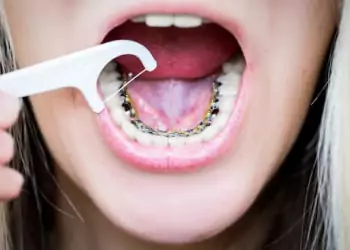
Lingual braces have the same components as metal braces, but the difference is the linguals are attached to the backside of the teeth. It implies that the teeth straightening appliance is not visible to anyone but comes in contact with the tongue frequently.
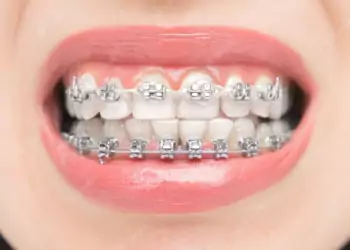
Self-ligating braces are one of the advanced teeth braces, as this brace can move teeth faster. It is similar to traditional metal braces but utilizes a specialized clip to secure the archwire. Hence the pressure applied to each tooth is minimized. It ensures the teeth do not encounter much friction while moving.
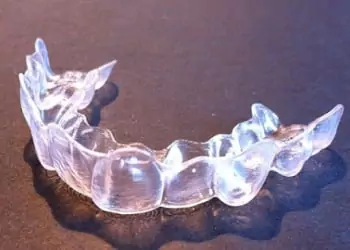
Clear aligners, also called Invisible braces, are plastic-like trays that are designed to fit over the teeth. Like other kinds of braces, the invisible braces also exert gentle pressure for moving teeth. Clear braces don't require routine adjustments, but users must change their trays every few weeks.
There is no age bar for wearing braces. Meanwhile, orthodontic evaluation is pivotal for any individual age 7. It is because the permanent teeth begin to erupt in this stage so that orthodontists can detect the signs of malocclusion in the beginning stage itself. Hence the braces treatment can be started earlier.
Remember that the teeth straightening treatments work well for those who wear braces once the adult teeth erupt. Getting brace treatments in adulthood is slightly inconvenient and time-consuming.
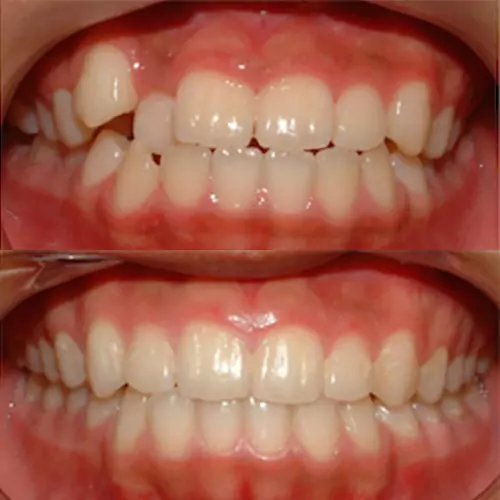
No. Orthodontic braces do not hurt when they are placed over the teeth.
Even though the brace wearers sense pain and soreness in their teeth, they are tentative and can last only 1 to 2 weeks. Such discomforts exist until the mouth gets adjusted to the braces.
Dental extractions are prescribed for teeth straightening treatments in exceptional cases. Orthodontists recommend teeth removals before putting on braces only if there is a lack of room in the jaw due to severe crowding of teeth. Otherwise, teeth extraction is not required to wear braces.
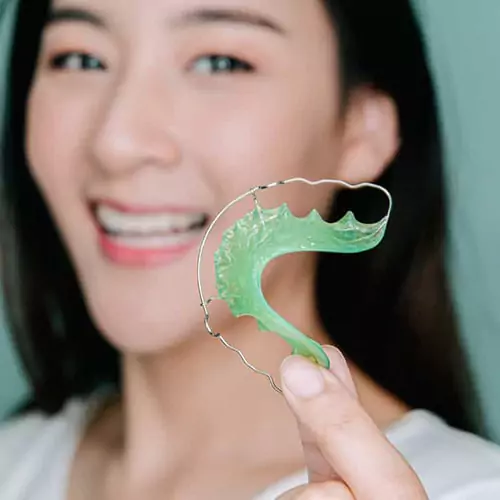
As the components of braces do not allow toothbrush bristles to reach all areas of the mouth, brace wearers should often brush to keep teeth and gums clean and healthy. Orthodontists recommend brushing 2 to 3 times and flossing daily during teeth straightening treatments.
Every brace wearer should watch what they eat while wearing braces. It is important to avoid hard & sticky foods during the treatment and advised to consume soft, liquid foods.
Yes. Wearing braces does not inhibit a person from doing physical activities and sports activities. Meanwhile, it is recommended to wear mouthguards while playing to safeguard the orthodontic appliance and teeth.
Veneers are laminates made up of ceramic, porcelain, composite bonding materials. They ate very thin like a…
Straighten your teeth safely and exceptionally Orthodontic treatment deals with correcting teeth and jaw alignment by putting…
What is the meaning of maxillofacial? Maxillofacial means jaws and face, which combines with mouth becomes the…
What is cosmetic dentistry? Cosmetic dentistry, also known as Aesthetic dentistry, aims to elevate teeth appearance without…
Teeth Whitening is the most widely performed cosmetic dental procedure, as it lightens a tooth's natural color…
What is a smile makeover? Smile makeover is a part of cosmetic dentistry and varies from person…
Transform your disfigured tooth to its actual structure rapidly Dental crowns are defined as hollow false teeth…
Zenith Dentistry - Exquisite dental implants center in Sri Lanka Dental implants are small titanium screws inserted…
What are dental bridges & when are they used? Dental bridges are used in case of a…
What are dentures? Dentures are constructed by the dentist to replace the missing teeth. They are also…
What is teeth scaling and why is it required? Scaling is a treatment which cleans teeth by…
Virtually painless With Unmatched Precision Root Canal refers to a tooth's hollowed-out cavity where the pulp chamber…
What is laser dentistry? Laser dentistry is an effective and precise way of performing various dental procedures…
Pediatric dentistry (or) Kids dentistry deals with evaluating and treating the dental health of infants, children, and…
What do you mean by sedation? Sedation dentistry helps one to snooze virtually during the visits to…
How important is brushing? Brushing is very important as it keeps our teeth and gums healthy. It…
What is it? Invisalign treatment uses a series of virtually invisible, removable, and comfortable aligners that allow…
What is Laser teeth whitening? Laser teeth whitening is one of the cosmetic dental treatments available today.…
#55, Hospital Road, Dehiwala, Sri Lanka.